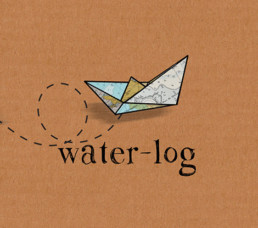Long before we had reached the Pacific coast of Central America we knew that we would need to watch the weather for Papagayos. From December to March, high pressure systems move into the Caribbean, reinforcing the trade winds which then pour over Pacific Central America. Their intensity depends on the strength of the trades and topography of the coastline. Papagayo winds are unusually gusty and they can turn on and off in an instant. Sometimes the gusts can be double the nominal wind strength.
On March 8th we were nearing the gulf of Papagayo having sailed 250 miles up the coast of Costa Rica from Puerto Jimenez in the Golfo Dulce. Our plan was not actually to cross the gulf itself on this passage but to arrive and anchor in Playas del Coco for a few days. However, we were aware that the forecast for that day in the Papagayo was for around 20 knots – quite manageable if we were to get the edge of it. So far the passage had been uneventful and all spent under engine as the wind was always less than 5 knots. We were still well south of any wind zone when we saw a distinct gust line in the water, marking where the conditions increased starkly from a mild 3 knots to 25 in an instant. Given that the wind line was so clearly visible on the surface we quickly retraced our steps in order to reef down and swap our genoa for our staysail while in the mild conditions. We prepared with caution and had 3 reefs in the main as we wanted to be ready for the wind being even stronger than that.
With nicely reduced canvas we headed back towards the wind line, prepared for a brisk run of 20 to 25 knots all the way up into Playas del Coco. But, less than an hour into our progress northwards we were consistently getting a base wind of 35 knots. It was already night-time and, disturbingly, we were still several miles south of Cabo Velas, the cape which is meant to mark the southernmost point at which the Papagayos can be felt. Now, I should mention at this point that 35 knots is nothing dangerous, it’s certainly a strong wind but, properly reefed, the boat is still manoeuvrable and can be kept to course well. Plus we’ve been in stronger winds in storm conditions and this was at least all wind and no rain. However, 35 knots is also not that fun when it’s dark and you’ve just switched into your solo 3 hour watch pattern plus you’re nowhere near the real wind zone yet which means that every mile of progress you make forwards means that it’s more likely to increase to 40 or 45 knots, which are the sort of winds that will put more stress on everything on board – not least of all the crew.
One thing that can make any decision making easier for us in this situation is to remember that even though we are currently passage-making, which means eating up some serious mileage to get somewhere, we are also in the fortunate position to be doing all of our sailing for pleasure. Ultimately, we do everything we do for its positive experiential value, and neither of us could see anything positive likely to come out of the night that we had ahead of us.
So we turned back. For the first time in 18 months and over 9,000 miles we decided that even though we would need to sail back for another 20 miles to get to the nearest viable anchorage it would be well worth it on balance. We could tackle the Papagayo on another, calmer day, preferably in the light and when we were well-rested.
Dawn on March 9th saw us pulling safely into anchor at Bahia Samara where we were greeted by the sight of wild horses running on the beach – such a happy and dramatic contrast from the night we’d just had. So two salty sea-dogs gladly soaked in the view, dropped the hook and flopped gratefully into our bed, sleeping soundly in the knowledge that sometimes it’s ok to be that little bit chicken.
